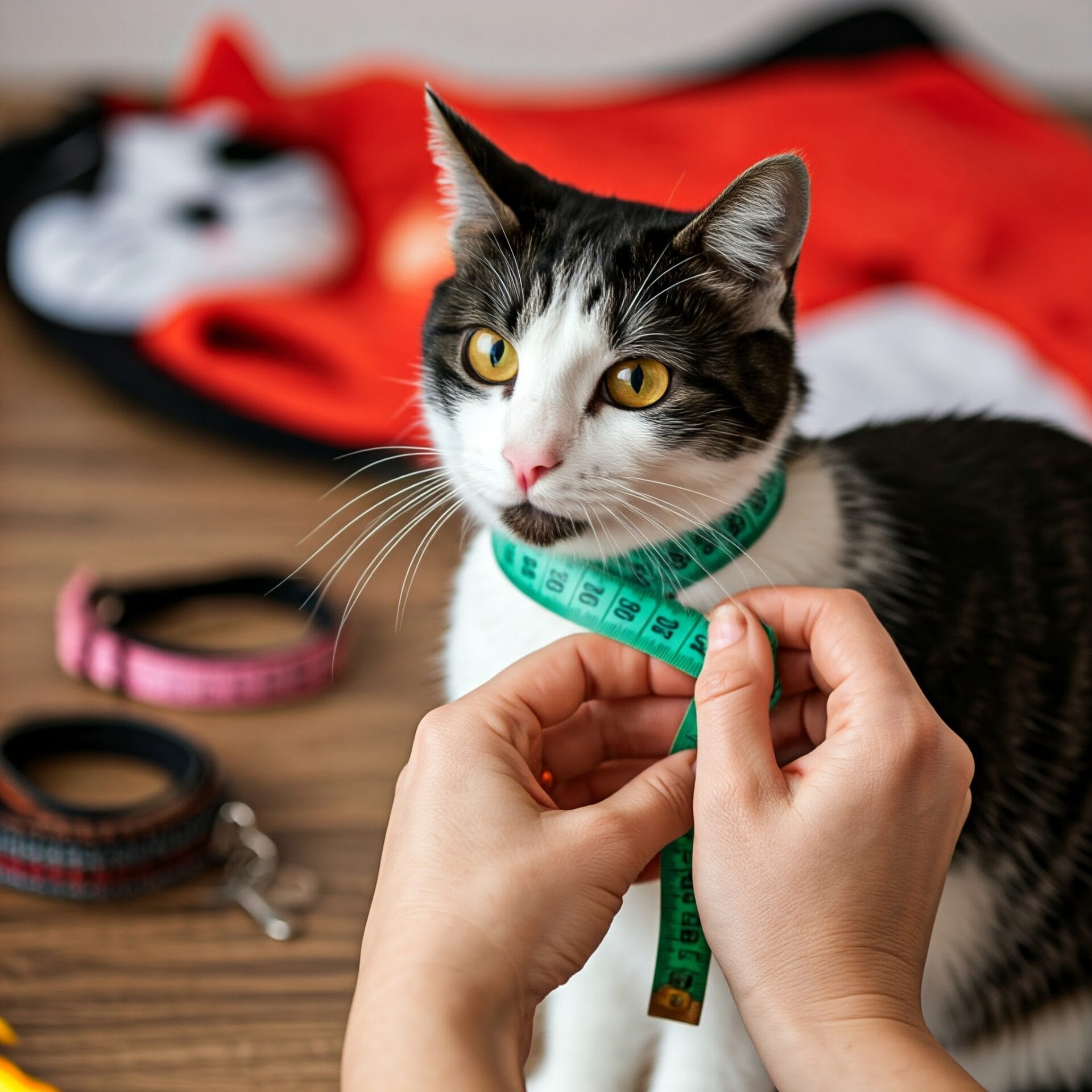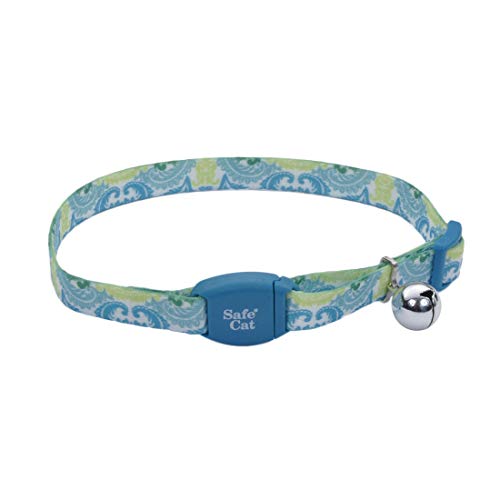
Cat collars are more than just accessories; they serve as an essential tool for identification, safety, and personal expression.
Many cat owners debate whether collars are necessary, fearing discomfort or safety hazards. However, a well-fitted and appropriately chosen collar can provide peace of mind, so that if your cat ever roams too far, they can be easily identified and returned home.
This comprehensive guide will delve into the world of cat collars, exploring different types, ensuring proper fit, and prioritizing safety and style.
Understanding the Importance of Cat Collars

Beyond style, cat collars serve crucial purposes:
- Identification: A properly fitted collar with an engraved ID tag is your cat's lifeline if they ever wander off. It provides essential contact information to help them find their way home. Include cat's name, your phone number, and a backup contact.
- Safety: Breakaway collars are designed to snap open if your cat gets caught on something, preventing injury or strangulation. A reliable breakaway mechanism in a cat collar refers to a safety buckle designed to automatically release when enough force is applied.
- Leash Attachment: Collars often serve as the attachment point for leashes. However a harness prevents choking and neck injuries when a cat pulls. It also reduces the risk of the cat slipping out of its collar making it a more secure and safer option.
Exploring Collar Types

There are many different types of cat collars but here is a list of the most popular:
- Breakaway Collars: These collars are equipped with a quick-release mechanism that snaps open under a certain amount of pressure, preventing strangulation hazards. [Display and Buy Box for a popular breakaway collar on Amazon]
- Buckle Collars: These traditional collars feature a buckle closure, offering a secure and adjustable fit. However, they lack the safety features of breakaway collars although some include an elastic component to allow your cat the opportunity to slip out of potential choking situations. [Display and Buy Box for a popular buckle collar on Amazon]
- Magnetic Clasp Collars: These innovative collars utilize strong magnets for a secure closure, offering ease of use and a stylish look but are less secure for active cats. [Display and Buy Box for a popular magnetic clasp collar on Amazon]
- GPS Collars: For adventurous cats, GPS collars provide peace of mind by allowing you to track their location in real-time. They are generally heavier that traditional collars but provide piece of mind in having a method of tracking them.
Purpose: Allows tracking of cats using the Apple Find My network
Benefits:
- Helps locate lost cats
- Provides peace of mind for cat owners
- Lightweight and comfortable for cats to wear
Features:
- Breakaway safety collar design
- Reflective stitching for nighttime visibility
- Adjustable size (9-13 inches)
- Lightweight (0.8 oz / 22.7 g)
- Available in various colors
- Made of high-quality nylon material
- Includes a secure AirTag holder
Tips from Users:
- Some users report that the collar is too large for smaller cats or kittens.
- The breakaway feature works well, providing safety for cats who may get caught on objects.
- Several customers mention that the AirTag fits securely in the holder.
- Overall, many users find the collar to be a good value for the price and effective for tracking their cats.
How to Size and Fit a Cat Collar

A properly fitted collar is snug but not too tight. It should allow for two fingers to slip comfortably underneath. To measure your cat's neck:
- Use a flexible measuring tape.
- Gently place the tape around your cat's neck. Make sure it's not too loose or too tight.
- Note the measurement but allow an extra inch or two to allow for some wiggle room.
- Also perform regular checking of the collar for:
- Adjustments for growing cats
- Signs of wear and needing replacement
What is the best way to measure and fit a cat collar?
This video provides a step-by-step guide on how to properly fit a cat collar, focusing on ensuring comfort and safety for the cat while avoiding any potential scratches or bites for the owner. Dr. Sarah Ellis from International Cat Care demonstrates the process.
Key steps include:
1. Measuring the cat's neck:** Use a soft tape measure while the cat is distracted, such as while eating, to get the correct collar size.
2. Fitting the collar:** Distract the cat with food, gently place the collar under their neck, and clip it at the top.
3. Checking the fit:** Ensure you can only fit one finger snugly underneath the collar. If more space is available, adjust the collar to a tighter fit.
4.Positive reinforcement:** Give the cat a treat immediately after fitting the collar to create a positive association with wearing it.
What is the best way to fit a collar to a cat who doesn't like collars?
This video provides a helpful guide on how to get a cat accustomed to wearing a collar. The key is positive reinforcement and gradual introduction.
Here's the process detailed in the video:
1, Initial Introduction:** Use a paste treat to associate the collar with a positive experience. Gently place the collar on the cat's neck, allowing them to get used to the weight, feel, and sound.
2. Positive Reinforcement:** Reward the cat with a special treat while the collar is on. Briefly remove the collar and treat, then reapply the collar and reward, ensuring the cat is rewarded for wearing the collar, not just distracted by the treat.
3. Gradual Tightening:** As the cat becomes more comfortable, gradually tighten the collar and fasten the buckle, helping them adjust to the feeling of it around their neck. Ensure the final fit is snug, allowing only one small finger to fit underneath.
4. Patience and Repetition:** Repeat the process over several days, adjusting the duration the collar is worn based on the cat's comfort level. The video emphasizes not leaving the collar on loosely and taking it off in between sessions.
Choosing the Right Material for Durability and Style

Cat collars are available in a wide range of materials:
- Nylon: A popular choice for its durability, affordability, and availability in various colors and patterns.
- Leather: Offers a classic and stylish look, but may not be as durable as nylon.
- Fabric: Provides a soft and comfortable option, often with decorative elements.
- Reflective: Incorporates reflective strips or threads to enhance visibility in low-light conditions.
Conclusion
Selecting the right cat collar is about balancing safety, comfort, and style. Whether opting for a breakaway collar, a traditional collar, or a GPS tracker, the key is to choose a collar that aligns with your cat’s lifestyle and needs. Regularly check the fit and ensure your feline friend remains both stylish and safe. Ready to find the perfect collar? Explore our recommended picks on Amazon to get started!




